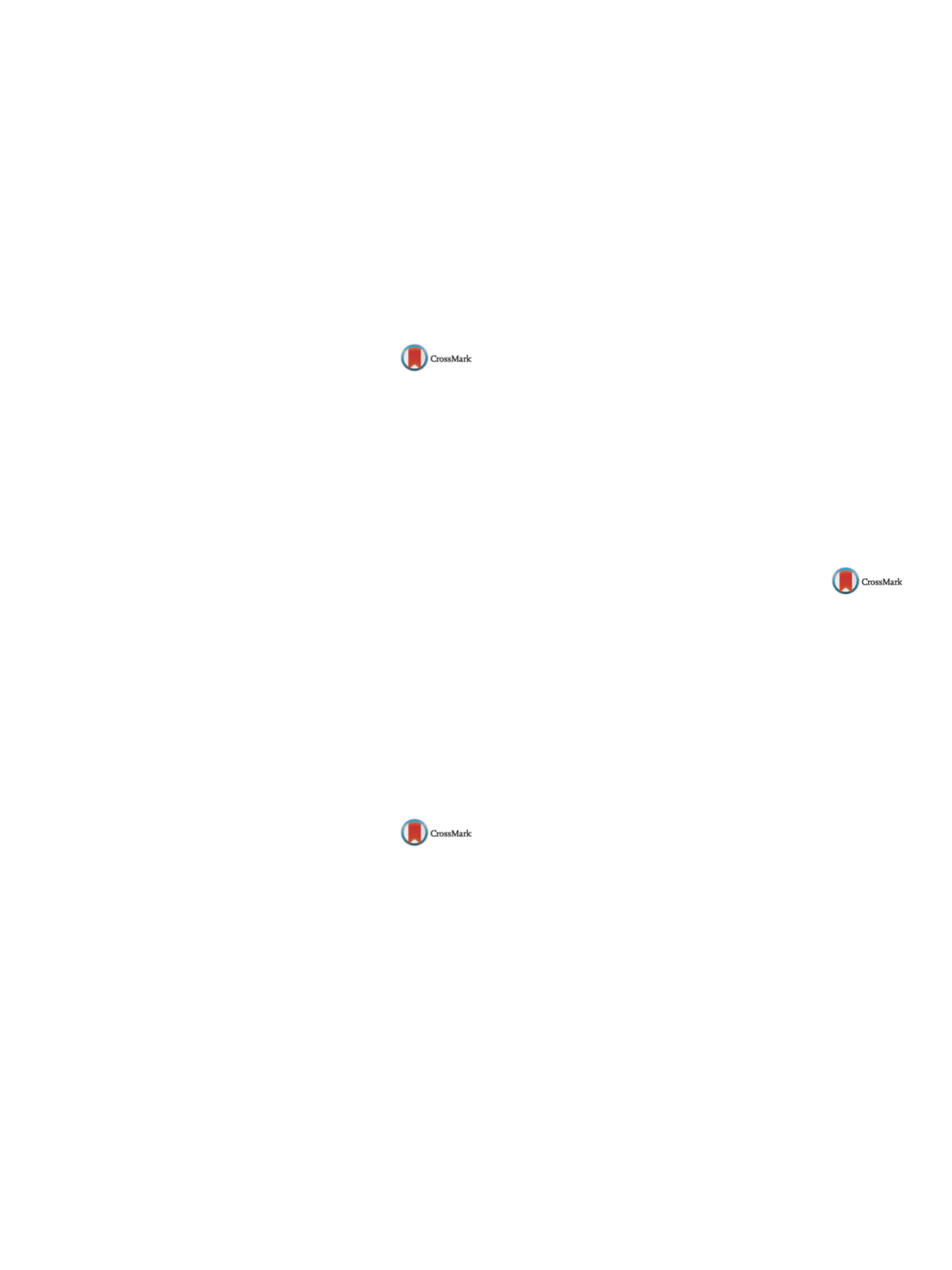

25th European Congress of Psychiatry / European Psychiatry 41S (2017) S772–S846
S815
they improved in consumption of soft drinks (
P
= 0.001) and fast
food meals (
P
= 0.009). Furthermore, the long-term patients low-
ered their weight and waist circumference while becoming more
physically active. There were no changes in HbA1c in the interven-
tion period.
Conclusion
Our study showed being long-termill and female gen-
der was associated with positive outcome of lifestyle intervention
into improving physical health and reducing diabetes type 2 risk,
meanwhile being newly diagnosed and being male showed a neg-
ative outcome despite intervention.
Disclosure of interest
The author has not supplied his/her decla-
ration of competing interest.
http://dx.doi.org/10.1016/j.eurpsy.2017.01.1582EV1253
Doses of antipsychotics in
maintenance phase compared to
doses in acute phase treatment
J. Ivanuˇsi´c
∗
, G. Filipovi´c Bili´c , O. Koi´c
University Hospital Center Osijek, Clinic of Psychiatry, Osijek, Croatia
∗
Corresponding author.
Maintenance phase treatment with antipsychotic medications is
recommended for all patients with schizophrenia. From clinical
perspective and based on studies, small proportion of patients after
first psychotic episode and far smaller proportion of patients with
multiple psychotic episodes do not experience relapse. The use
of antipsychotic medications as maintenance treatment reduces
relapse rates. The optimal doses of antipsychotics in maintenance
phase stay unclear although investigators attempted to identify
doses sufficiently high to prevent relapses and at the same time
sufficiently low to avoid adverse effects. In maintaining remission,
it is usually recommended to use doses of antipsychotic medica-
tions that were effective in acute phase treatment as long as they
are well-tolerated, but few studies and clinical experience show
that lower doses than those usual for the acute phase are suffi-
cient for maintenance treatment. The aim is to investigate doses of
antipsychotics used in maintenance phase compared to doses used
in acute phase treatment.
Disclosure of interest
The authors have not supplied their decla-
ration of competing interest.
http://dx.doi.org/10.1016/j.eurpsy.2017.01.1583EV1254
Subjective well-being under clozapine
measured with the Serbian version of
GASS-C: Preliminary results
D. Ignjatovic Ristic
1 , 2 ,∗
, C. Dan
3, D. Hinic
4 , 5, J. Jovic
61
Clinical Center Kragujevac, Psychiatric Clinic, Kragujevac, Serbia
2
University of Kragujevac, Faculty of Medical Sciences, Kragujevac,
Serbia
3
Mental Health Organization North-Holland North, Department of
Community psychiatry, Haarlem, The Netherlands
4
University of Kragujevac, Faculty of Science, Kragujevac, Serbia
5
University of Kragujevac, Faculty of Philology and Arts, Kragujevac,
Serbia
6
Universiti of Pristina, Kosovska Mitrovica, Department of Preventive
Medicine, Faculty of Medicine, Kosovska Mitrovica, Serbia
∗
Corresponding author.
Introduction
Clinical benefits of antipsychotic treatment depend
on the efficacy and on the patients’ tolerability and compliance. To
reduce patient initiated treatment discontinuation, timely detec-
tion of treatment emergent side effects is essential. The Glasgow
Antipsychotic Side-effects scale for clozapine (GASS-C) is a recently
developed instrument to measure subjectively experienced cloza-
pine side effects.
Objectives
Timely detection of unreported clozapine related side-
effects.
Aim
Documenting the prevalence of side-effects in schizophre-
nia or chronic psychotic disorder with the Serbian version of the
GASS-C.
Methods
The sample included 95 in and outpatients with
schizophrenia or chronic psychotic disorder. All subjects filled out
the Serbian version of the GASS-C and a sociodemographic ques-
tionnaire.
Results
The median age was 46.1 years; 53.7% of subjects were
male. Clozapine doses ranged from 25 to 423mg. Drowsiness (78%)
was the most commonly reported side-effect. Overall, 16.8% of the
patients added other complaints, such as headache, pain, hand
or leg numbing or nightmares. According to GASS-C total score
categorization [2], only 4.2. % of subjects were rated with severe
side-effects, while 14% of themselves rated their symptoms as
severe or distressing. More side effects were reported by female
patients and by inpatients. Only a weak positive correlation was
found between the severity of the side effects and clozapine dosage.
Conclusions
We found the GASS-C to be a useful instrument that
elicits both unknown side-effects and patients rating of their sever-
ity. Side effects did not clearly relate to the prescribed dose. Future
research should include the relation of clozapine plasma levelswith
side effects assessed with GASS-C.
Disclosure of interest
The authors have not supplied their decla-
ration of competing interest.
http://dx.doi.org/10.1016/j.eurpsy.2017.01.1584EV1255
Effect in antipsychotic-induced
hyperprolactinemia after switching to
long-acting injectable aripiprazole:
A 1-year study
M. Juncal Ruiz
1 ,∗
, B . Fernández-Abascal Puente
1 ,O. Porta Olivares
1 , M.Gómez Revuelta
2 , R. Landera Rodríguez
1 ,L. Sánchez Blanco
1 , G.Pardo de Santayana Jenaro
1 ,M. Pérez Herrera
1 , J. Mayoral Van Son
31
Hospital Universitario Marqués de Valdecilla, Psychiatry,
Santander, Spain
2
Hospital Universitario de Álava-Sede Santiago, Psychiatry,
Vitoria-Gasteiz, Spain
3
Unidad de Salud Mental de Torrelavega. Hospital de Sierrallana,
Psychiatry, Torrelavega, Spain
∗
Corresponding author.
Introduction
Antipsychotic-induced hyperprolactinemia is asso-
ciated with relevant side effects: short-term as hypogonadism,
gynecomastia, amenorrhoea, sexual dysfunction and galactor-
rhoea; long-term as cardiovascular disease, bone demineralization
and breast and prostate tumors.
Aims
To evaluate the effect of switching to long-acting injectable
aripiprazole on long-lasting antypsychotic-induced hyperpro-
lactinemia.
Methods
This was a prospective observational 1-year study car-
ried out in 125 outpatients with schizophrenia who were clinically
stabilized but a switching to another antipsychotic was indicated.
We measured the basal prolactine at the start of the study and 1
year after switching to long acting injecatable (LAI) aripiprazole.
Results
In basal analytic,
48% had hyperprolactinemia
(21.8–306.2 ng/mL) and 66.5% of them described side effects:
78% sexual dysfunction (72% men), 11% galactorrhoea (100%
women), 5.5% amenorrhoea and 5.5% bone pain (100% women).
In 48% of patients with hyperprolactinemia, the previous antipsy-
chotics comprised: LAI-paliperidone (65,7%), oral-risperidone (7%),
oral-olanzapine (6.1%), oral-paliperidone (5.2%), LAI-risperidone
(4%) and others (12%). One year after switching to LAI-aripiprazole,
prolactine levels were lower in all patients and in 85% prolac-


















